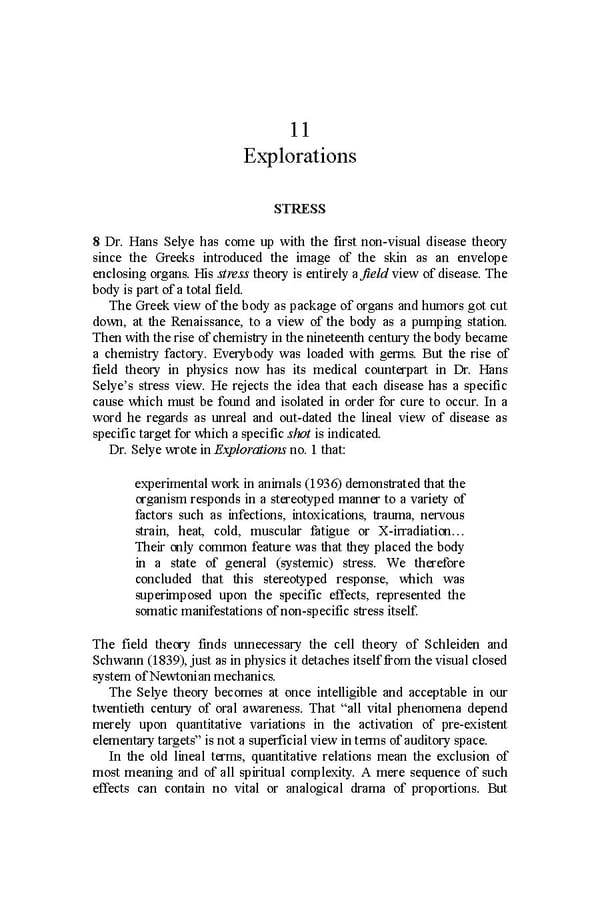11 Explorations STRESS 8 Dr. Hans Selye has come up with the first non-visual disease theory since the Greeks introduced the image of the skin as an envelope enclosing organs. His stress theory is entirely a field view of disease. The body is part of a total field. The Greek view of the body as package of organs and humors got cut down, at the Renaissance, to a view of the body as a pumping station. Then with the rise of chemistry in the nineteenth century the body became a chemistry factory. Everybody was loaded with germs. But the rise of field theory in physics now has its medical counterpart in Dr. Hans Selye’s stress view. He rejects the idea that each disease has a specific cause which must be found and isolated in order for cure to occur. In a word he regards as unreal and out-dated the lineal view of disease as specific target for which a specific shot is indicated. Dr. Selye wrote in Explorations no. 1 that: experimental work in animals (1936) demonstrated that the organism responds in a stereotyped manner to a variety of factors such as infections, intoxications, trauma, nervous strain, heat, cold, muscular fatigue or X-irradiation… Their only common feature was that they placed the body in a state of general (systemic) stress. We therefore concluded that this stereotyped response, which was superimposed upon the specific effects, represented the somatic manifestations of non-specific stress itself. The field theory finds unnecessary the cell theory of Schleiden and Schwann (1839), just as in physics it detaches itself from the visual closed system of Newtonian mechanics. The Selye theory becomes at once intelligible and acceptable in our twentieth century of oral awareness. That “all vital phenomena depend merely upon quantitative variations in the activation of pre-existent elementary targets” is not a superficial view in terms of auditory space. In the old lineal terms, quantitative relations mean the exclusion of most meaning and of all spiritual complexity. A mere sequence of such effects can contain no vital or analogical drama of proportions. But
 Essential McLuhan Page 193 Page 195
Essential McLuhan Page 193 Page 195